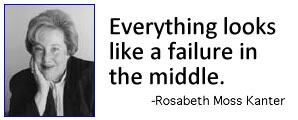Similar Posts

Bloomberg’s Lawsuit vs. the Fed
By Alan Feuer
The critical lawsuit challenging that mystery of finance known as the Bailout started, oddly enough, with a casual newsroom chat.
Mark Pittman, an investigative reporter for Bloomber…

Money & Markets – November 17, 2017
Here are the Friday charts: Set One, Set Two, Set Three, Set Four

My Paleo Media Diet
By Jim Stogdill
What would happen if we turned off, opted out, and completely disconnected ourselves from the technology that runs our lives? For Jim Stogdill, tuning out brought greater productivi…

That's Tariffic
The Daily Show With Jon Stewart
Mon – Thurs 11p / 10c
That’s Tariffic
www.thedailyshow.com
Daily Show Full Episodes
Political Humor
Tea Party

Officials: 23 Injured, 2 Dead, “More Devices” as Two Huge Blasts Rock Boston Marathon Finish Line
By Jordan Graham, John Zaremba
Two huge explosions rocked the Boston Marathon finish line at Copley Square just before 3 p.m. today, apparently causing numerous casualties, some possible with traum…

Senate Food Safety Bill – Take Action
The Weston A. Price Foundation has produced an action alert regarding the Senate Food Safety Bill.
From their newsletter (available only to subscribers):
Start the New Year off right, by t…
6 Comments
Comments are closed.


Thanks Katherine!
Good to speak with you yesterday on KPFA about the dangers of hyperleveraging when coupled with criminal intent.
Unfortunately, the testimony I was referring to above was the semi-annual Humphrey Hawkins testimony of the Fed before the Senate Banking Committee. Some Senators seemed genuinely perplexed during the question and answer period about how could things have gone so wrong at the GSEs because they had such “good management”. One would hope that such an august body would not be so clueless.
Good managers never would have leveraged themselves at 60 to 1 when all their models such as Black Scholes assume a Gaussian distribution of prices and outcomes but, as Paul Volcker pointed out a few months ago, we keep having these sigma 4 events every 10 years and each one is worse than the one before.
You mentioned yesterday that FHA was hypothecating the same security multiple times in some of their CDOs. How widespread was that crime?
Did this occur at Fannie and Freddie also?
Thanks so much.
Matt in Burlingame
Matt:
Typically, the goal of hearings such as you refer to are OTHER than illuminating or educating. For example, goals may be to generate support for a “reform” or look like “something is being done” or to engineer support for changes.
To the extent that the derivatives are ignored for sincere reasons, it is often because easy to understand information on derivatives and derivatives portfolios are typically not available.
Best,
Catherine
Catherine, I enjoyed speaking with you yesterday on KPFA. I was the gentleman who emphasized the DEFLATIONARY aspects of this catastrophe.
Catherine, as I listen to the Senate hearings today on Fannie and Freddie reform legislation everyone seems to be missing one of the most basic causes of what pushed us over the cliff.
After the Glass Steagal Act was passed in 1933, the margin requirements for stock purchases was raised to 50%, because it was clear that purchasing stocks on just 5% margin contributed to the rapidity of the Great Crash of 1929.
However the bond and derivatives DWARF the puny stock markets in size. For example, the notional value of the derivatives markets is routinely estimated at around 450 TRILLION dollars.
Yet Bear Stearns was leveraged at a 30 to 1 ratio and FNMA and Freddie are operating at 50 to 1 leverage, according to the FT.
This hyperleveraging is profoundly destabilizing. Why do so many people ignore this elephant in the room?
Matt
James:
This could only happen with Federal Reserve leadership. However, building this kind of bubble requires many institutions to also lead or go along.
Catherine
Catherine,
On last Wednesday’s flashpoints (which was the best one yet!) you
said the characteristics of a bubble economy are:
-encourage speculation
-which in turn drives assets up
-which in turn attracts capital
-then capital is pulled out of area
My question: isn’t the federal reserve at the helm here, enabling speculation with their
inflationary management of the economy?
Catherine,
Is not the federal reserve at the helm of all this centralization, inflating/devaluing the dollar
with money/credit expansion and enabling all the other actors like Freddie Mae to compound it all
or is this oversimplifying?
After all having a central bank is the antithesis of a free market.